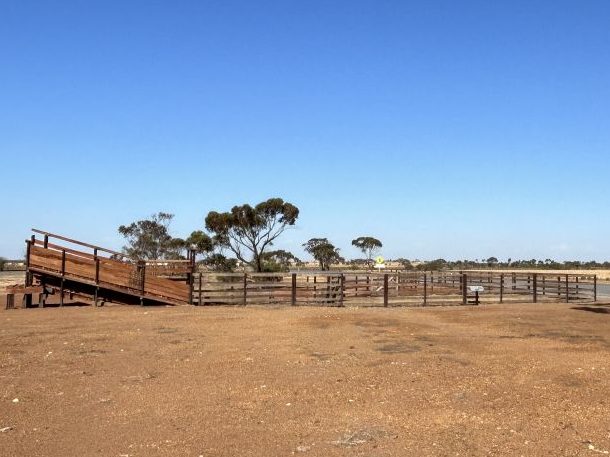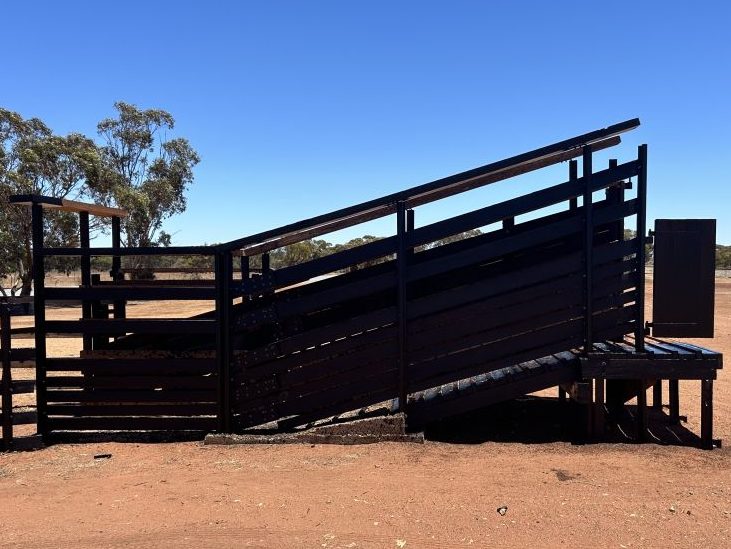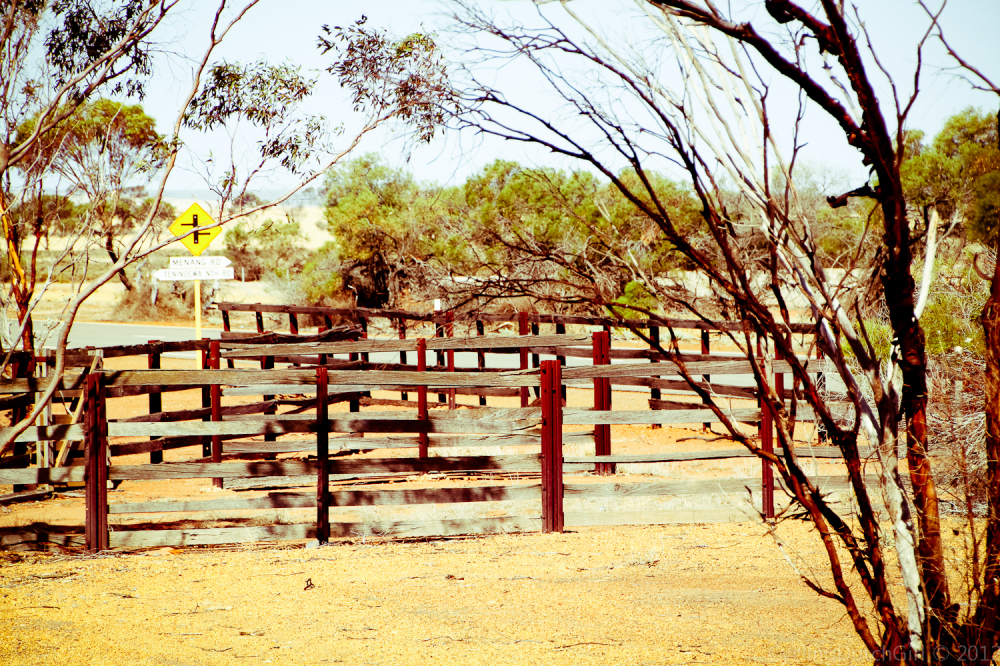These yards are typical of many, many rail sidings throughout country Australia.
This one would be one of very few remaing if not the only one remaining.
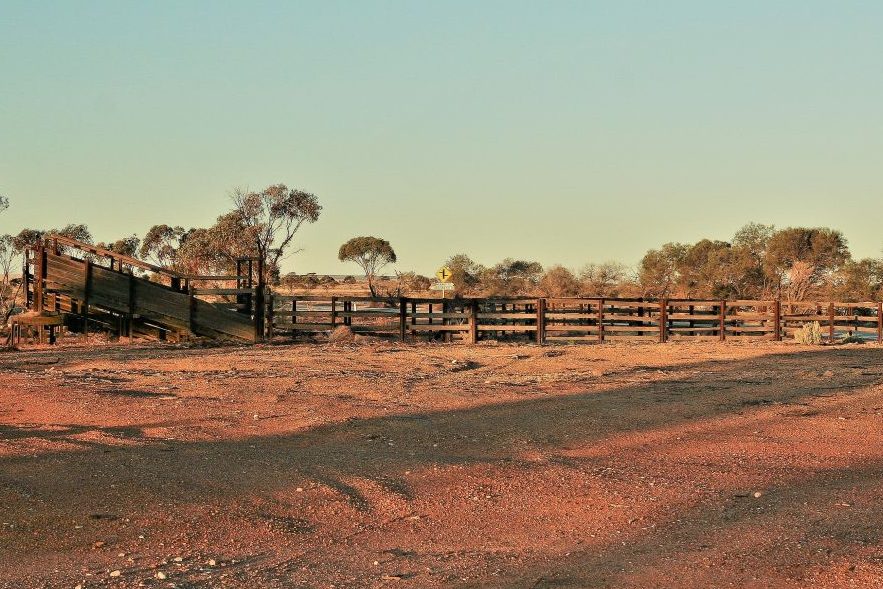
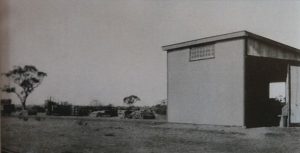
The Goods Shed with the Yards in the left background Taken in 1955 (roughly)
The stockyards are located opposite the Tenindewa Store. Together with the Store they are all that remains of the once thriving community that developed around the Tenindewa siding/railway station.
Prior to the current yards a more rudimentary arrangement was put in place for the “Settlers”.
Resulting from extensive researching into Tenindewa history via newspapers of the day, a distinctive reporter has posthumously emerged under the synonym “Our Own Correspondent”.
This reporter, seemingly of his own volition, and using the Newspapers as his megaphone, acted as a district advocate lobbying for basic conveniences for “settlers” such as, a school, hygienic water, postal services, and “stockyards”.
These articles can be viewed on <tenindewa.com> under the heading (HISTORY). Notwithstanding, below is an example of his advocacy work and the beginnings of the very campaign that eventually led to these Stockyards being in built.
August 19th, 1911, Geraldton Express
……...“One of the important matters they are overlooking, and that is the provision for loading and unloading sheep. A number of settlers have sheep and no doubt before long they will all have them. The only convenience for loading at present is an old broken-down sheep race. A cheap yard could be easily made and a great boon. It is hoped the Railway Department will please note this and the writer contends that the Geraldton Chamber of Commerce should pay some attention to such matters at sidings and at places outside of Geraldton because it is the out-country that will make Geraldton”.
September 10th, 1912, Geraldton Express
“Railway facilities are much behind the requirements here, and with a good harvest, things will be worse than middling, as the siding is far too short to deal fairly with a good season. There is no accommodation for stock loading, although there are hundreds of sheep kept by farmers, and some have good crops of lambs too.”
September 16th, 1913, Geraldton Express
“There are no signs of the sheep loading yard yet. Surely the Railway Department will not take the men away from here till this very necessary matter is taken in hand”.
October 28th, 1913, Geraldton Express
“Our siding is looking very spic and span and under new paint. We now have a good ramp, nice goods shed and waiting room but no provision for trucking our sheep. It would only cost a few pounds and would be a great boon for the settlers. I know one settler that had to lift 75 fat sheep on to the top deck [of a stock carriage] and it was no fun”.
December 6th, 1913, Geraldton Express
“The Geraldton officials should watch the siding closer, as farmers have engagements to meet and these delays at sidings are most unsatisfactory. No sheep yards have been built here yet. Will Mr. Sam Elliott please take notice as we have no member now”.
December 13th, 1917, Geraldton Express
“A settler received 400 breeding ewes from Yowergabbie [Station] a few days since, and paid 15 pounds 4 shillings, and the Railway Department did not supply even a sheep race to unload them, hence the settler had to lift 200 ewes from the top deck of the of the [rail] truck to the ground, and as there had been a shower [of rain] while the sheep were in the truck you can imagine what a nice job it was”.
April 15th, 1919, Geraldton Express
“The Railway Department should erect a stock loading yard here as there are 18 settlers with sheep and other stock. At present they have to be drove [sic] to Mullewa or loaded at the siding under great difficulties. Recently I saw two bogies of sheep loaded without even a portable race and the sender had to lift 160 fat wethers to the top deck from the ground. Members of Parliament might make note of these yards and also increasing the size of the Wolya Dam”.
August 21st, 1919, Geraldton Express
“A great number of sheep are owned by farmers around here, and it is time we had small trucking yards at the railway siding. At present sheep have to be loaded at Mullewa or under great difficulties at our siding”.
January 22nd, 1920, Geraldton Express
“The timber for our railway stock yards has arrived and we hope to see them erected very soon, as there are a number of stock to be trucked during the next few months”
June 15th, 1920, Geraldton Express
“This is a fine stock raising district when better methods are used.
The new railway stockyards are finished and are proving a great convenience to the settlers, but better arrangements for dispatching and lifting stock are required”.
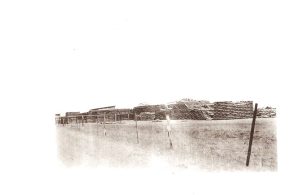
Note; Looking west, the stockyards foreground left (built 1921) Note Griffiths shop extreme right (built 1935)
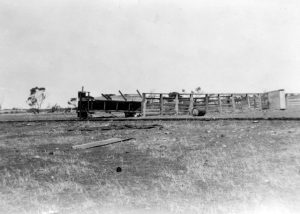
The Original Yards; (Built 1920) This photo taken possibly in 1944 after a major storm hit Tenindewa. Note the “Privey” on the right but still no Loading Race”
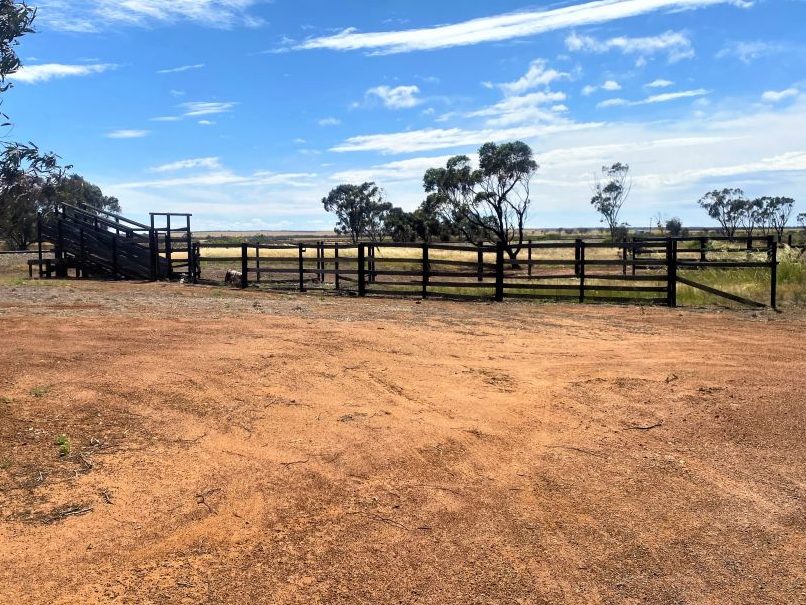
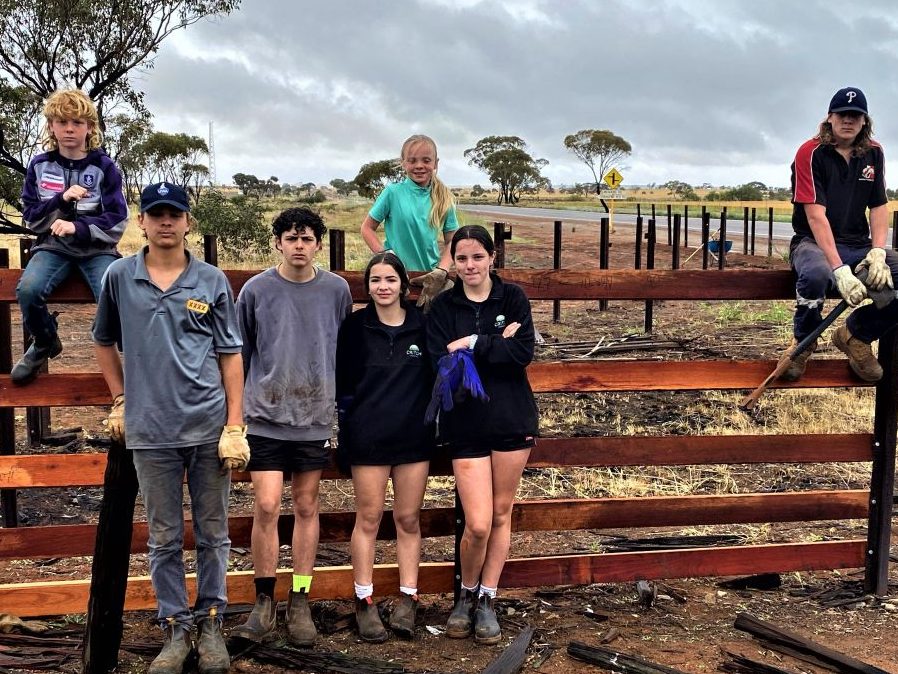
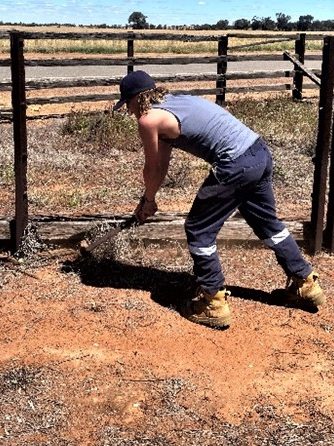
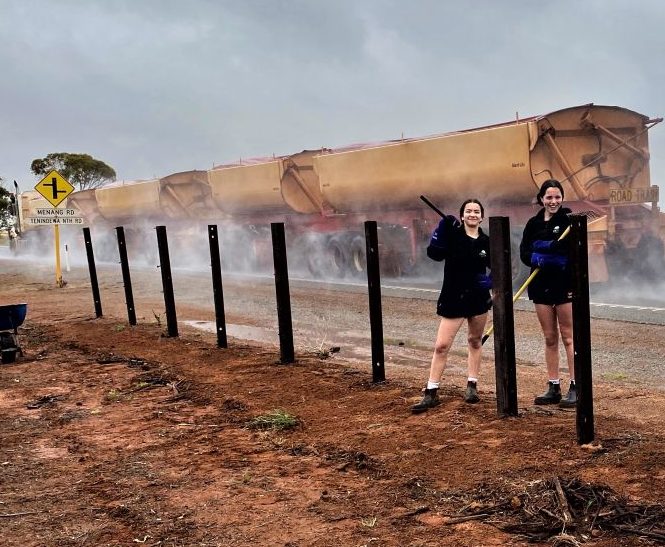
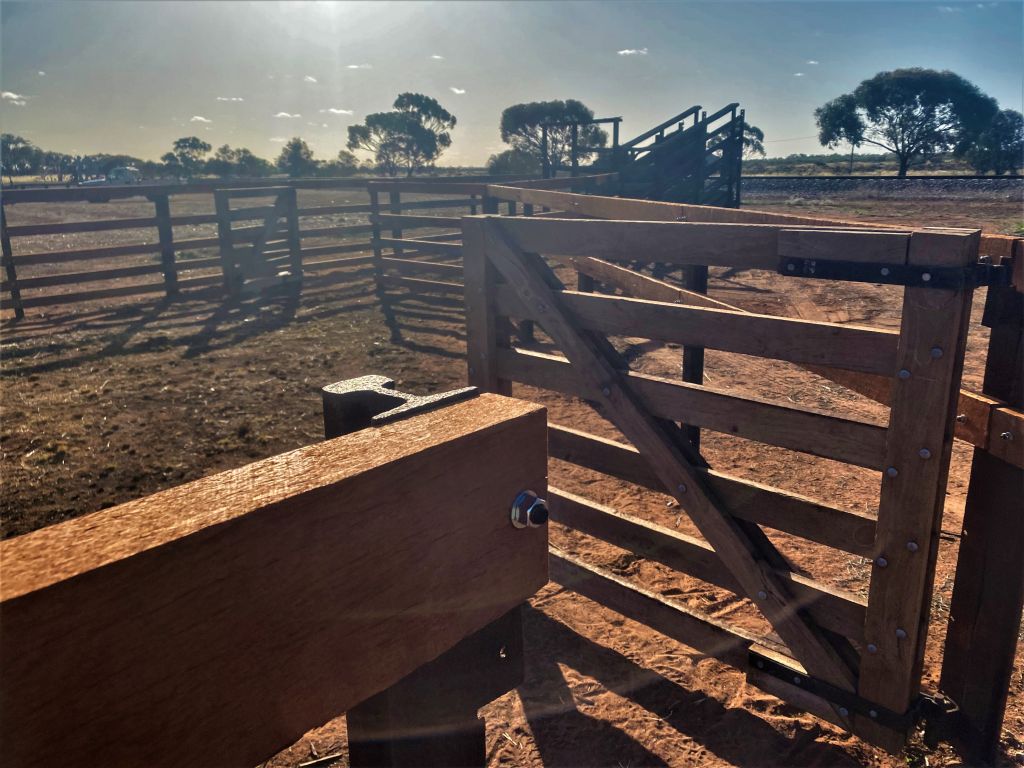
These two gates were re-made by Geraldton Mens Shed
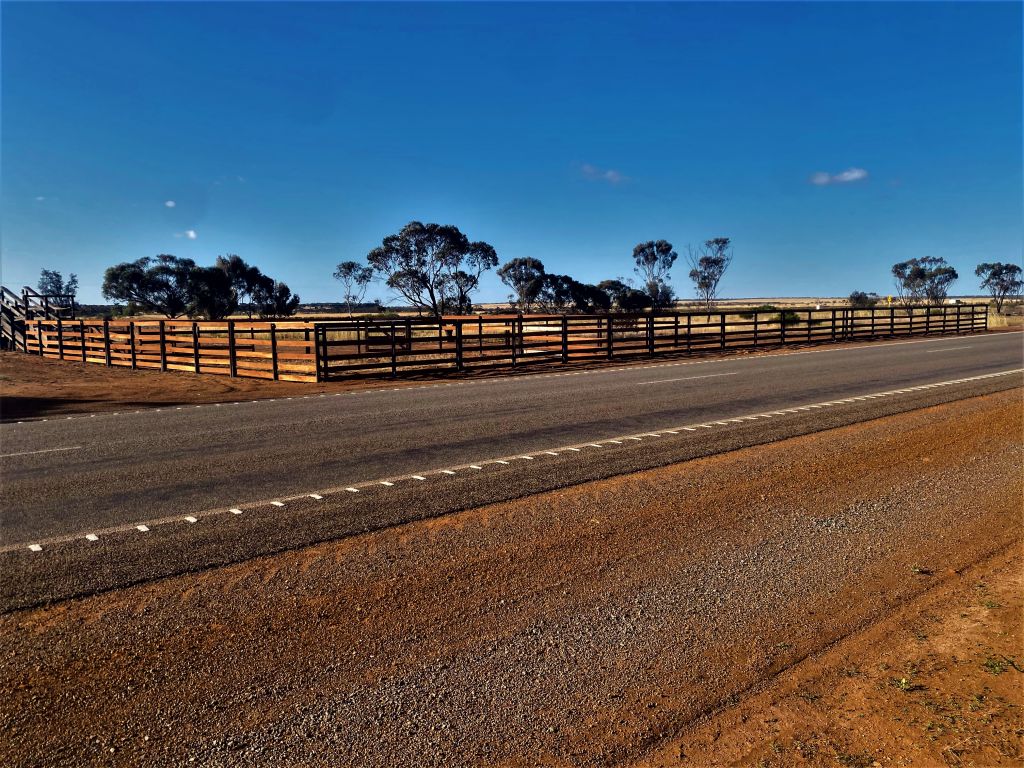
Completion of Stage 1

Finished Project
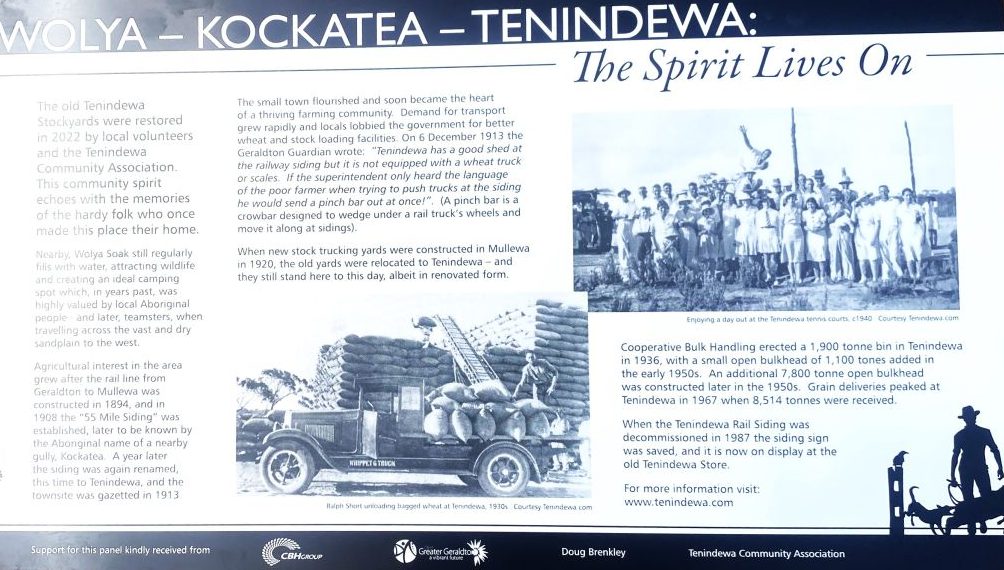
Many thanks to Cooperatve Bulk Handling (CBH), The City of Greator Geraldton, Geraldton Men’s Shed and Mr. Doug Brenkley
Stage 2
The renovation of this Loading-Ramp was made possible by the generous funding of the Mullewa Community Fund.
This“Trust” is a self-help, self-funded, independent not for profit organization that works to support “service organisations” and “local business development”.
Appropriate Interpretive Signage as per the above will was attached to the renovated ramp in the New Year
The Stage 2 upgrade took place in November/December 2023




